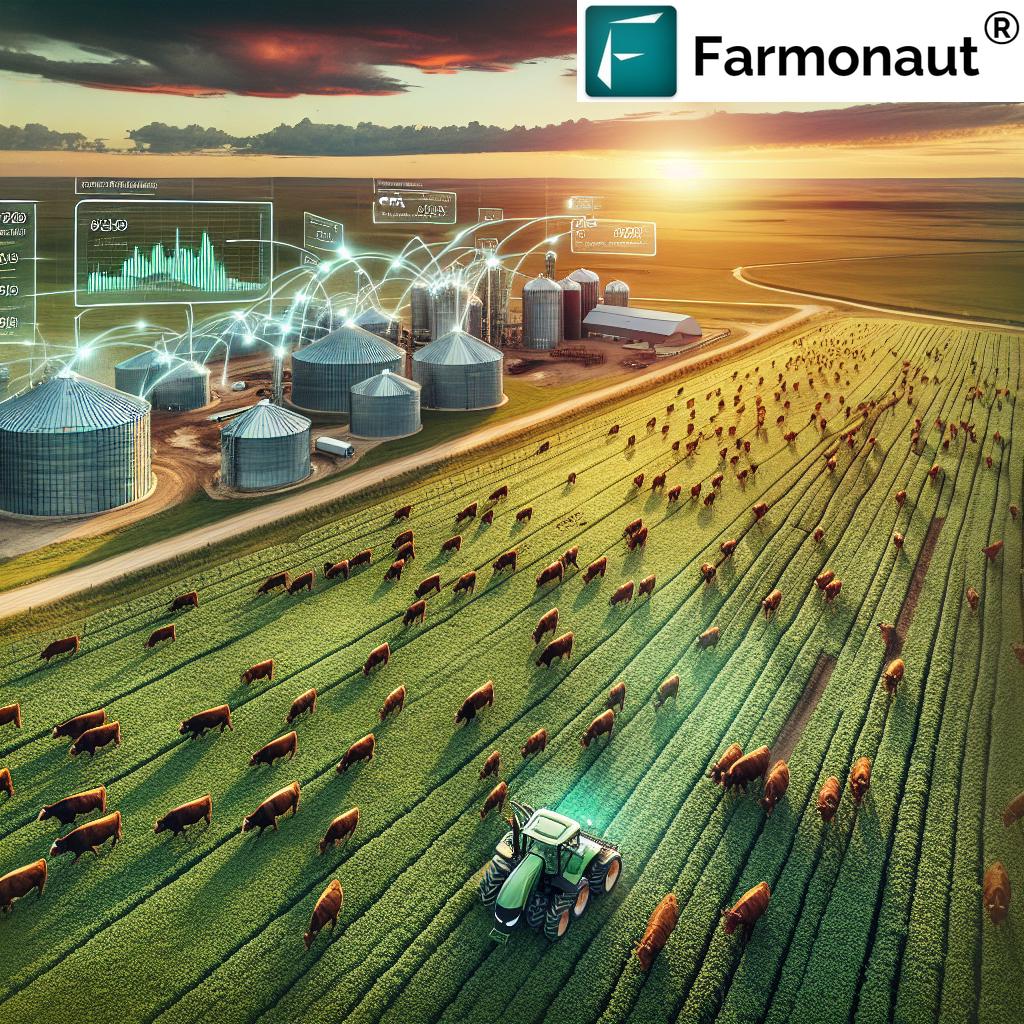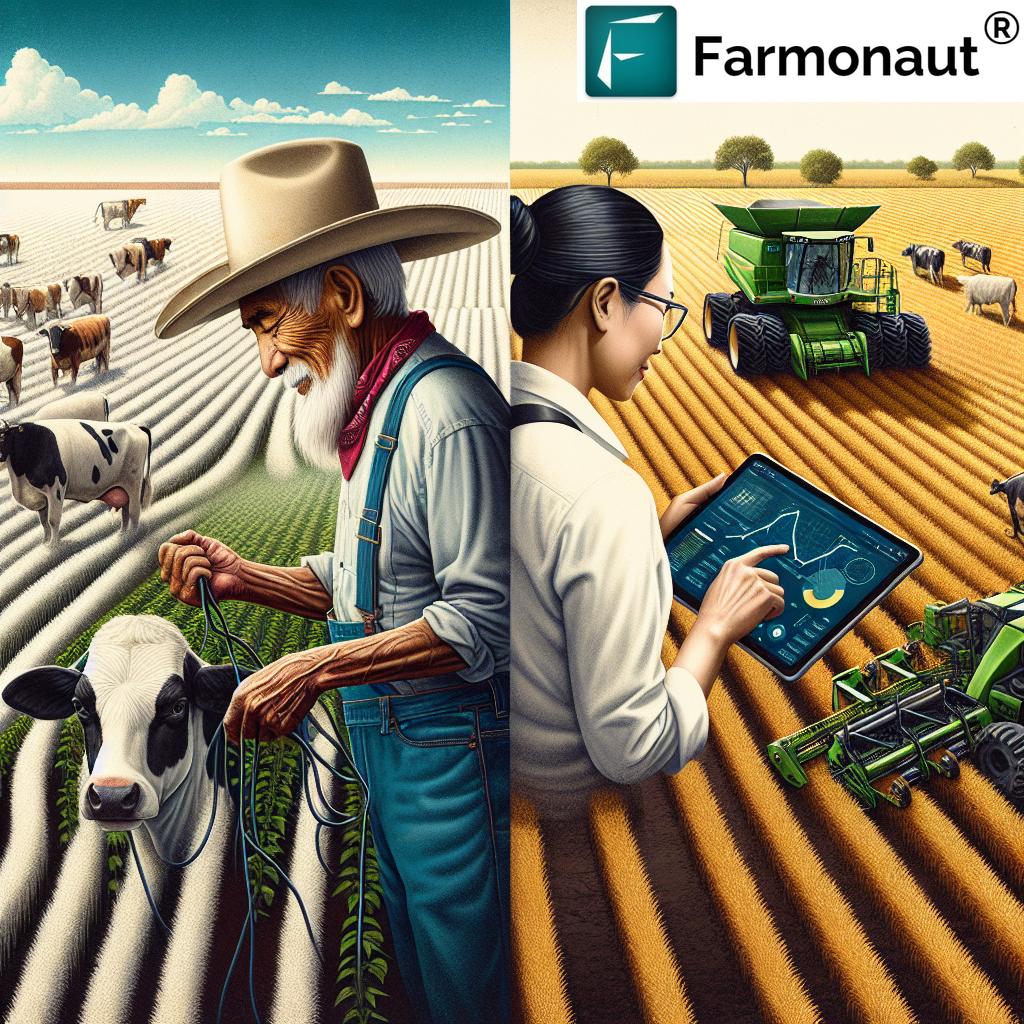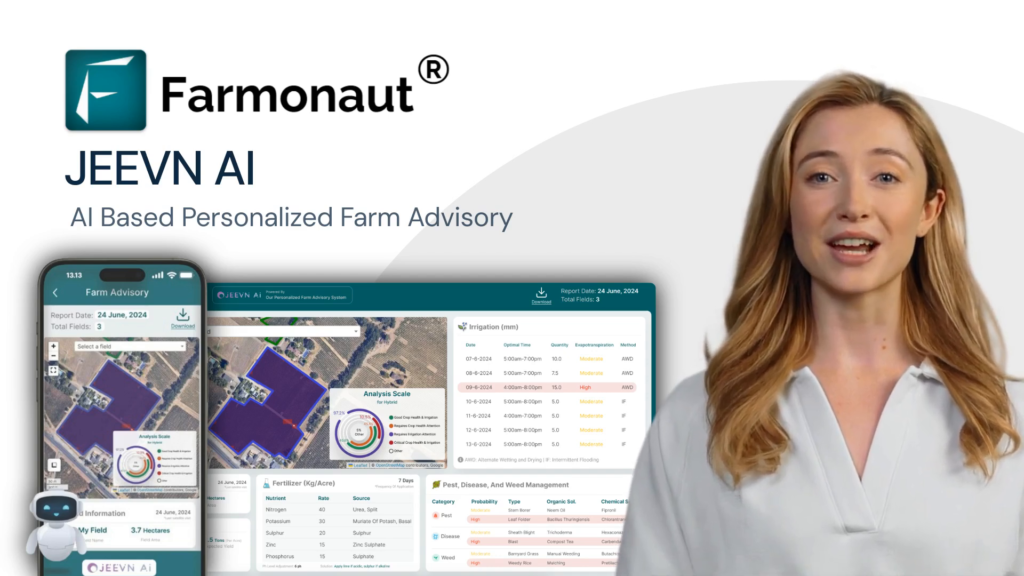2024 Cattle Industry Outlook: Navigating Supply Challenges and Herd Expansion Strategies in the Midwest
“In 2024, the Midwest cattle industry faces supply challenges across multiple states, including Iowa, Kansas, and Missouri.”
As we venture into 2024, the cattle industry in the United States, particularly in the Midwest, finds itself at a critical juncture. The landscape of livestock production is evolving rapidly, shaped by a complex interplay of supply chain disruptions, market demands, and the pressing need for sustainable farming practices. In this comprehensive analysis, we’ll delve deep into the cattle industry trends for 2024, exploring the challenges and opportunities that lie ahead for farmers, ranchers, and agribusinesses across the heartland of America.
The Current State of the Midwest Cattle Industry
The Midwest, encompassing states like Iowa, Kansas, Missouri, and Illinois, has long been the backbone of the U.S. cattle industry. Known for its vast prairies and rich agricultural heritage, this region plays a pivotal role in shaping the nation’s livestock supply chain management strategies. However, as we enter 2024, the industry faces significant hurdles that require innovative solutions and adaptive strategies.

The agricultural market analysis for 2024 reveals a complex picture. On one hand, demand for beef remains strong, driven by both domestic consumption and export opportunities. On the other, producers are grappling with tight supplies, rising input costs, and the ongoing challenge of maintaining herd health and productivity in the face of changing climate patterns.
Supply Chain Challenges: A Closer Look
One of the most pressing issues facing the cattle industry in 2024 is the ongoing disruption in supply chains. These challenges are multifaceted and include:
- Labor shortages at processing plants
- Transportation bottlenecks
- Fluctuating feed prices
- Unpredictable weather patterns affecting grazing lands
These factors have created a ripple effect throughout the industry, impacting everything from calf production to the availability of beef products on grocery store shelves. As a result, cattle producers and packers are being forced to reevaluate their strategies and seek out new solutions to maintain efficiency and profitability.
Herd Expansion Strategies: A Balancing Act
In response to the tight supply situation, many ranchers in the Midwest are exploring herd expansion strategies. This approach, however, is not without its challenges. Expanding a herd requires careful planning, significant investment, and a long-term outlook. Factors that producers must consider include:
- Availability of quality heifers for breeding
- Access to sufficient grazing land
- Management of feed and water resources
- Market projections for future beef demand
Successful herd expansion also hinges on the ability to leverage modern farming practices and technologies. This is where precision agriculture technology comes into play, offering tools and insights that can help ranchers make more informed decisions about their herds.
The Role of Precision Agriculture in Cattle Farming
“Farmonaut’s precision agriculture technology addresses needs of both cattle ranchers and crop farmers, impacting two major agricultural sectors simultaneously.”
In the face of these challenges, precision agriculture technology is emerging as a game-changer for the cattle industry. Companies like Farmonaut are at the forefront of this revolution, offering innovative solutions that can help ranchers optimize their operations and improve overall productivity.
Farmonaut’s platform, accessible via web app, Android, and iOS applications, offers a suite of tools designed to enhance decision-making in agriculture. For cattle ranchers, this technology can be particularly beneficial in several key areas:
- Pasture management: Using satellite imagery to assess grazing conditions and optimize rotational grazing practices.
- Crop yield optimization: For ranchers who grow their own feed, Farmonaut’s tools can help maximize crop yields, ensuring a steady supply of quality feed for their herds.
- Water resource management: Monitoring soil moisture levels and planning efficient irrigation strategies.
- Weather forecasting: Providing accurate, localized weather predictions to help ranchers prepare for and mitigate the impacts of extreme weather events.
By leveraging these technologies, cattle producers can make more informed decisions about herd management, resource allocation, and long-term planning. This data-driven approach is crucial for navigating the complex challenges facing the industry in 2024 and beyond.
Sustainable Farming Practices: A Path Forward
As the cattle industry looks to the future, sustainability has become a central focus. Consumers are increasingly demanding transparency in food production, and regulators are placing greater emphasis on environmental stewardship. In response, many Midwest cattle producers are adopting sustainable farming practices that not only meet these demands but also improve the efficiency and resilience of their operations.
Some key sustainable practices gaining traction include:
- Regenerative grazing: Implementing grazing patterns that improve soil health and sequester carbon.
- Water conservation: Adopting advanced irrigation systems and water recycling techniques.
- Methane reduction: Exploring feed additives and manure management strategies to reduce greenhouse gas emissions.
- Biodiversity promotion: Incorporating native plant species into pastures to support local ecosystems.
These practices not only benefit the environment but can also lead to healthier cattle, reduced input costs, and potentially higher-value products for environmentally conscious consumers.
Farm Equipment Innovations: Enhancing Efficiency
The evolution of farm equipment is playing a crucial role in addressing the challenges faced by the cattle industry. In 2024, we’re seeing a wave of innovations designed to improve efficiency, reduce labor requirements, and enhance overall productivity on ranches and farms across the Midwest.

Key advancements in farm equipment include:
- Automated feeding systems: Reducing labor costs and ensuring consistent nutrition for cattle.
- Precision fencing technologies: Allowing for more flexible and efficient grazing management.
- AI-powered health monitoring systems: Early detection of health issues in the herd.
- Drone technology: For pasture assessment and cattle monitoring over large areas.
These technological advancements are helping ranchers do more with less, a critical factor in an industry facing tight margins and labor shortages. By integrating these innovations with precision agriculture platforms like Farmonaut, producers can create a powerful ecosystem of tools to support their operations.
The Impact on Rural Economic Development
The challenges and opportunities facing the cattle industry in 2024 have significant implications for rural economic development in the Midwest. As the industry adapts to new realities, it’s creating ripple effects throughout rural communities in states like Iowa, Kansas, and Missouri.
Some key trends we’re observing include:
- Job creation in agtech sectors
- Increased investment in rural infrastructure to support modern farming practices
- Growth of value-added beef products, creating new market opportunities
- Partnerships between ranchers and technology providers, fostering innovation
These developments are helping to revitalize rural economies, attracting young professionals and entrepreneurs to agricultural communities. The integration of technology in farming is also opening up new educational and career pathways, encouraging the next generation to see agriculture as a high-tech, forward-looking industry.
Navigating Market Volatility
The cattle industry has always been subject to market fluctuations, but the challenges of 2024 are introducing new levels of volatility. Producers are having to navigate a complex landscape of factors including:
- Global trade dynamics affecting beef exports
- Changing consumer preferences, including the rise of plant-based alternatives
- Fluctuations in grain prices impacting feed costs
- Regulatory changes related to environmental and animal welfare standards
To succeed in this environment, cattle producers are turning to sophisticated market analysis tools and risk management strategies. Many are also diversifying their operations, exploring niche markets such as grass-fed or organic beef to capture premium prices and reduce exposure to market volatility.
The Role of Data in Modern Cattle Farming
In the digital age, data has become a crucial asset for cattle producers. From genetic information to market trends, the ability to collect, analyze, and act on data is transforming how ranches operate. Platforms like Farmonaut are at the forefront of this data revolution, providing farmers with actionable insights derived from satellite imagery, weather data, and AI-powered analysis.
Key areas where data is making a significant impact include:
- Precision breeding programs
- Optimized feeding strategies
- Predictive health management
- Market timing decisions
By leveraging these data-driven insights, cattle producers can make more informed decisions, reduce waste, and improve overall efficiency. This approach is not only beneficial for the bottom line but also supports more sustainable and responsible farming practices.
Collaborative Approaches to Industry Challenges
As the cattle industry faces unprecedented challenges, collaboration has become more important than ever. We’re seeing increased cooperation between:
- Producers and researchers
- Farmers and technology providers
- Industry associations and policymakers
These collaborations are driving innovation, shaping policy, and helping the industry adapt to changing conditions. For example, partnerships between ranchers and crop farmers are leading to more integrated approaches to land use and resource management, benefiting both sectors.
The Future of Beef: Consumer Trends and Market Opportunities
Looking ahead, the cattle industry must remain attuned to evolving consumer preferences and emerging market opportunities. Some key trends shaping the future of beef include:
- Increased demand for transparency in production methods
- Growing interest in locally sourced and specialty beef products
- The rise of “climate-friendly” beef as a marketable attribute
- Expansion of direct-to-consumer sales channels
Producers who can adapt to these trends and effectively communicate the value of their products stand to gain a competitive edge in the marketplace.
Midwest Cattle Industry Outlook 2024: A Comparative Analysis
To provide a clearer picture of the regional dynamics at play, let’s examine a comparative analysis of key indicators across major Midwest states:
| State | Estimated Cattle Inventory (million head) | Projected Herd Expansion Rate (%) | Average Crop Yield for Cattle Feed (tons/acre) | Farm Equipment Adoption Rate (%) | Rural Economic Impact Score (1-10) |
|---|---|---|---|---|---|
| Iowa | 3.9 | 2.5 | 4.2 | 78 | 8 |
| Kansas | 6.3 | 1.8 | 3.8 | 72 | 7 |
| Missouri | 4.2 | 2.2 | 3.5 | 65 | 6 |
| Midwest Average | 4.8 | 2.2 | 3.8 | 72 | 7 |
This table highlights the regional variations and overall trends in the Midwest cattle industry. It’s clear that while challenges exist, there are also significant opportunities for growth and innovation across the region.
The Role of Technology in Addressing Industry Challenges
As we navigate the complexities of the 2024 cattle industry outlook, technology emerges as a crucial ally. Platforms like Farmonaut are at the forefront of this technological revolution, offering solutions that address many of the challenges faced by producers.
Key technological advancements include:
- Satellite-based crop monitoring for improved feed production
- AI-driven advisory systems for optimized decision-making
- Blockchain-based traceability for enhanced supply chain transparency
- Advanced weather forecasting for better risk management
These tools, available through platforms like Farmonaut’s web application and mobile apps, are empowering producers to make data-driven decisions, improve efficiency, and adapt to changing market conditions.
Conclusion: Embracing Change and Innovation
As we look to the future of the cattle industry in the Midwest, it’s clear that challenges and opportunities abound. The industry is at a crossroads, facing pressures from supply chain disruptions, changing consumer preferences, and environmental concerns. However, with these challenges come opportunities for innovation, growth, and sustainable development.
The key to success in this evolving landscape lies in embracing change and leveraging the power of technology. By adopting precision agriculture practices, implementing sustainable farming techniques, and utilizing data-driven decision-making tools, cattle producers can navigate the complexities of the modern market while building resilient, efficient operations.
As we move forward, collaboration between industry stakeholders, technology providers, and policymakers will be crucial in shaping a positive future for the Midwest cattle industry. By working together and leveraging innovative solutions like those offered by Farmonaut, we can ensure that this vital sector continues to thrive, supporting rural economies and meeting the needs of consumers for generations to come.
The 2024 outlook may be challenging, but with the right strategies and tools, the Midwest cattle industry is well-positioned to overcome obstacles and seize new opportunities in the years ahead.
FAQ Section
Q: What are the main challenges facing the Midwest cattle industry in 2024?
A: The main challenges include supply chain disruptions, labor shortages, fluctuating feed prices, and the need for sustainable practices amidst changing environmental regulations.
Q: How can precision agriculture technology benefit cattle ranchers?
A: Precision agriculture technology can help ranchers optimize pasture management, improve crop yields for feed, manage water resources more efficiently, and make data-driven decisions for herd management.
Q: What strategies are cattle producers using to expand their herds?
A: Producers are focusing on careful breeding programs, optimizing feed and grazing strategies, leveraging technology for health monitoring, and making data-driven decisions on herd expansion timing.
Q: How is the cattle industry adapting to consumer demands for sustainability?
A: The industry is adopting practices such as regenerative grazing, water conservation techniques, methane reduction strategies, and promoting biodiversity on ranches.
Q: What role does data play in modern cattle farming?
A: Data is crucial for precision breeding, optimized feeding strategies, predictive health management, and market timing decisions. Platforms like Farmonaut provide valuable insights from satellite imagery and AI-powered analysis.
For more information on how Farmonaut’s technology can support your agricultural operations, visit our API Developer Docs or explore our API offerings.
















